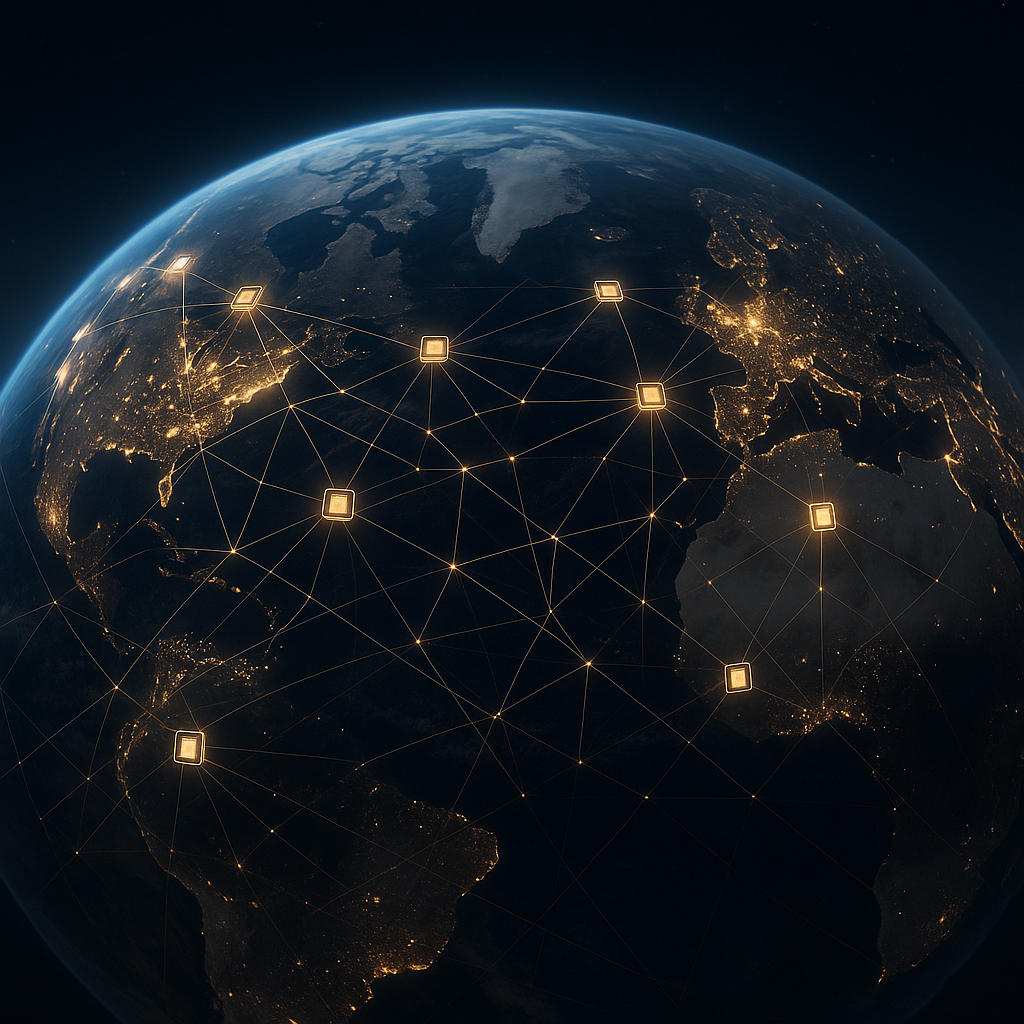
From Idle GPUs to Global Intelligence: The Rise of Decentralized AI Compute
Two years ago, I shared a futuristic scenario imagining the year 2140, where humanity is fully connected through a decentralized network of AI nodes called TWIS (The World Intelligence System). In that vision, Bitcoin evolves to become the AI data currency powering a global, distributed supercomputer that runs on green energy and democratizes access to advanced intelligence for everyone.
What once felt like a distant science-fiction narrative is now rapidly moving toward reality. Around us, a major shift is taking shape: the transformation of idle GPUs and underused compute capacity into a decentralized, global intelligence engine. This evolution isn’t just about technical progress – it represents a profound economic and societal shift that will redefine how we build, access, and scale intelligence worldwide.
Traditionally, Proof of Work (PoW) systems like Bitcoin rely on miners performing energy-intensive computations purely to secure the network. While these systems have proven effective at decentralization and security, they consume enormous amounts of energy without producing tangible outputs beyond cryptographic assurance.
At the same time, we’re experiencing an unprecedented global demand for compute power, driven by the explosive growth of AI. GPUs have become one of the world’s most valuable resources, essential for training large-scale language models, powering advanced scientific research, and enabling real-time intelligent services. Yet, access to this compute capacity remains highly centralized and expensive, dominated by a few hyperscale cloud providers.
This imbalance has paved the way for a new vision: transforming idle or fragmented compute resources into a vast, decentralized AI infrastructure. Instead of sitting unused or locked away in centralized data centers, GPUs around the world can now be aggregated into a global supercomputer accessible to everyone.
Projects like Aethir and io.net are at the forefront of this movement. Aethir is building a decentralized cloud layer that repurposes idle GPUs, creating a distributed market for affordable AI and gaming compute. By allowing GPU owners to monetize excess capacity, Aethir not only unlocks economic value but also makes powerful compute more accessible to startups and researchers globally. Similarly, io.net is aggregating underutilized GPU clusters into a high-performance, low-latency decentralized network purpose-built for demanding AI workloads. This architecture breaks the stranglehold of centralized cloud giants and enables a new class of builders to experiment and innovate without prohibitive infrastructure costs.
Adding to this momentum, CoreWeave, originally a crypto mining company that has transformed into a leading AI-specialized GPU cloud provider, recently filed for an IPO, underscoring the massive and growing demand for AI-focused compute infrastructure. Compute is quickly becoming a new global commodity, as critical to modern economies as energy and raw materials once were.
This transformation marks the emergence of a new economic architecture where compute is traded, shared, and consumed as a decentralized commodity. GPUs and compute power are no longer just tools – they become the foundation for a new market structure that aligns incentives for individuals, organizations, and machines alike.
In this future, global networks of miners and node operators won’t simply secure financial transactions. They will actively contribute to training next-generation language models, powering real-time AI services, and supporting decentralized applications – all while earning blockchain rewards and helping to build an open, global intelligence layer.
Why Do We Think It Matters? We believe this convergence represents one of the most transformative opportunities of our time. We see decentralized AI compute as the bridge connecting blockchain’s economic and incentive structures with AI’s insatiable need for scalable, distributed infrastructure.
As part of our investments approach, we aim to support visionary founders who are building the decentralized infrastructure stack of the future: distributed GPU networks, programmable on-chain compute markets, and AI-native protocols that enable frictionless, transparent, and democratized access to intelligence.
If you’re a founder or researcher building at this intersection, we’d love to connect and help you shape this future!
Related Resources

Sensi.ai’s $100M Journey: Vertical AI Shaping the Future of Care Intelligence

Blocks Raises $10m Seed to Reimagine How Teams Work with AI


